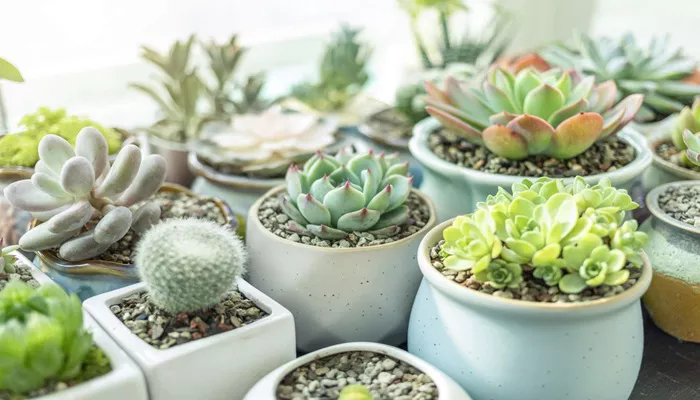Succulents are renowned for their stunning, fleshy leaves and their ability to thrive in low-maintenance environments. However, when these resilient plants bloom, they offer a surprising twist that can leave even seasoned gardeners pondering their next steps. Succulent flowers can be a beautiful but temporary spectacle, and knowing how to care for your plant during and after flowering is crucial for maintaining its health and vitality. In this comprehensive guide, we will explore the nuances of succulent flowering, from preparation and care during the bloom to post-bloom management.
Understanding Succulent Flowering
The Nature of Succulent Blooms
Succulent flowering is a rare but enchanting event. Unlike typical garden flowers, succulents often produce their blossoms in a dramatic, elongated spike or cluster, known as an inflorescence. The flowers are typically tubular or bell-shaped and can vary in color from vibrant reds and pinks to more subtle yellows and whites.
Why Do Succulents Flower?
Flowering in succulents usually occurs when the plant is mature and well-cared for. Environmental factors such as changes in temperature, light, and water availability can trigger blooming. Some succulents flower as a natural part of their life cycle, while others may bloom in response to stress or seasonal changes.
Preparing for the Bloom
Assessing Your Succulent’s Health
Before your succulent starts to bloom, it’s essential to ensure it’s in optimal health. Healthy succulents are better equipped to handle the energy expenditure of flowering. Check for signs of disease or pest infestations, and make sure the plant is free from any root rot or other issues.
Adjusting Light Conditions
Succulents generally require bright, indirect light. When preparing for flowering, ensure your plant is receiving adequate light. While direct sunlight can be beneficial, it can also lead to sunburn, so monitor your succulent’s light exposure and adjust accordingly.
Watering and Fertilizing
Proper watering is crucial before and during the blooming period. Ensure the soil is well-draining and avoid overwatering, as excess moisture can lead to root rot. A balanced, low-nitrogen fertilizer can provide the necessary nutrients without causing excessive leaf growth, which might overshadow the blooming process.
During the Bloom: Care and Maintenance
Supporting the Inflorescence
As the flower stalk develops, it may need support to prevent it from bending or breaking. Use stakes or small supports to help the stalk remain upright. Ensure that any supports used do not damage the plant or its leaves.
Monitoring Watering Needs
During flowering, succulents generally have slightly different water needs. The flowering process can increase the plant’s water consumption. Check the soil moisture regularly and adjust your watering schedule to accommodate the plant’s needs without overwatering.
Managing Pests and Diseases
Flowering succulents can be more susceptible to pests and diseases. Inspect your plant regularly for common pests like mealybugs or aphids. If you notice any signs of infestation, treat them promptly with appropriate methods, such as insecticidal soap or neem oil.
Post-Bloom Care
Pruning the Inflorescence
Once the flowering period is over, the flower stalk will begin to wither. Carefully prune the spent inflorescence to prevent any potential disease from spreading. Use sterilized scissors or pruning shears to make clean cuts, reducing the risk of infection.
Evaluating Plant Health
After flowering, assess your succulent’s overall health. Check for any signs of stress or damage caused by the blooming process. It is normal for some succulents to experience a temporary period of dormancy or reduced growth after blooming.
Adjusting Care Regimens
Following the bloom, adjust your care routine as needed. Re-evaluate watering schedules, light conditions, and fertilizing practices to align with your succulent’s post-blooming needs. This period is crucial for helping the plant recover and prepare for future growth.
see also: How to Repot Succulent Cuttings?
Novel Ideas for Succulent Bloom Management
Propagating from Blooms
In some cases, succulents that have flowered can be propagated from offsets or leaves produced during the blooming period. Carefully collect any offsets and plant them in well-draining soil to grow new succulents.
Creating a Bloom Journal
Consider keeping a journal to track the blooming patterns of your succulents. Documenting when they flower, the conditions they were in, and how they respond to blooming can provide valuable insights for future care.
Displaying Blooms Creatively
Enhance the beauty of your succulent blooms by incorporating them into creative displays. Arrange your flowering succulents in decorative pots or create a blooming arrangement to showcase their unique beauty.
Conclusion
Succulent flowering is a captivating process that adds a new dimension to the care and appreciation of these resilient plants. By understanding the nuances of succulent blooms, from preparation and care during flowering to post-bloom management, you can ensure your plant remains healthy and vibrant throughout the blooming cycle. Embrace the beauty of succulent flowers and use this opportunity to enhance your gardening skills and enjoy the unique charm of these remarkable plants.
Related topics:
- How to Grow Zebra Plant Succulent?
- How Much Water Is Used for a Succulent Terrarium?
- How to Plant Succulents in Rocks?


